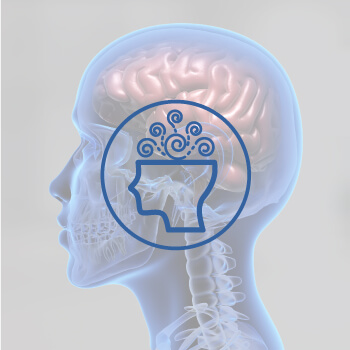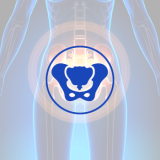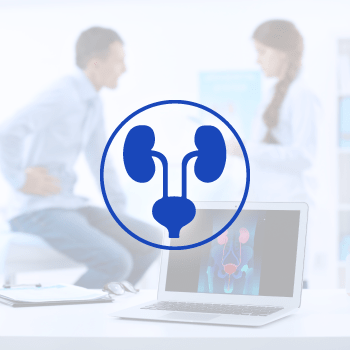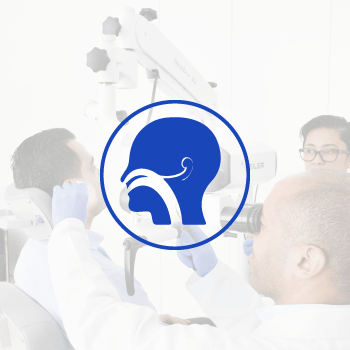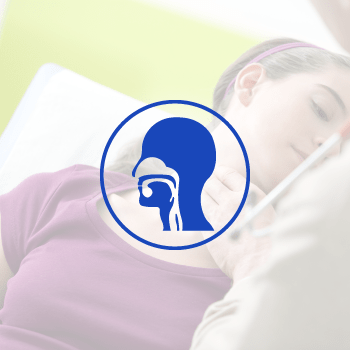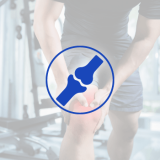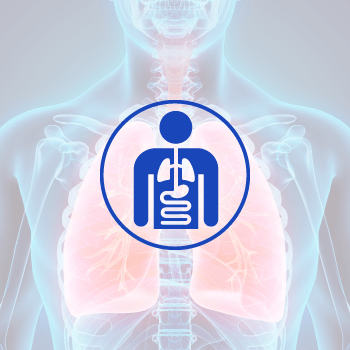GASTROENTEROLOGY & HEPATOLOGY CLINIC
Harley Street Gastro Clinic is a highly specialized clinic for diagnosing and treating digestive tract, liver, and pancreatic disorders.
This includes (among others) reflux symptoms, abdominal pain, bloating, diarrhea, constipation, gastrointestinal/rectal bleeding, chronic anemia, irritable bowel syndrome, inflammatory bowel diseases, food allergy/intolerance, gastrointestinal infections, colon polyps, elevated liver enzymes, fatty liver, virus hepatitis, acute and chronic pancreatitis, and colon cancer screening.
Our clinic offers comprehensive and state of the art endoscopic techniques according to highest international standard.
In our endoscopy unit we use chromoendoscopy and Narrow Band Imaging (NBI), a technology that helps to diagnose minute pre-cancerous lesions via endoscopy which could then be removed within the same appointment; this eliminates the need for surgery in most cases, and with a very low risk of complication.
For non invasive visualization of the entire gastrointestinal tract our department offers capsule endoscopy (CapsoVision). Compared to other capsules with cameras at the end, CapsoVision with 360° panoramic view has more advantages for detection of gastrointestinal lesions.
Furthermore, our clinic, unlike most other endoscopy units in the UAE, uses Co2 insufflation, which is rapidly absorbed from the gastrointestinal tract, and eliminates discomfort, bloating, and pain when the patient undergoes endoscopy.
Our clinic is recognized by HAAD (Health Authority Abu Dhabi) as a screening centre for colon cancer.
The gastro clinic is in addition offering the most advanced ultrasound techniques including vascular and contrast enhanced ultrasound.
Our clinic is one of the first clinics in the region to use contrast enhanced ultrasound (CEUS, available soon at HSMC), a sophisticated ultrasound technique that helps to diagnose abdominal and liver disorders accurately without exposing patients to radiation.
Dr. Iyad A Issa has authored / co-authored more than 20 papers over the past few years, published in high impact international journals, in addition to more than 50 oral presentations given locally and internationally. He is also a designated reviewer and member of the editorial board on several peer-reviewed journals including the world journal of gastroenterology. His main fields of interest / research are functional disorders, GI bleed, obesity and inflammatory bowel disease, which was the subject of his last book chapter published in 2012.
SERVICES:
- Capsule Endoscopy
- Colonoscopy – Polypectomy
- Ultrasound/Duplex Ultrasound
- Diagnostic and Therapeutic Upper Endoscopy
- Food & Tolerance & Allergy Test
- Diagnostic and Therapeutic Lower Endoscopy
- Percutaneous Endoscopic Gastrostomy (PEG)
- Endoscopic Mucosal Resection (EMR)
- Ultrasound Guided Biopsy
- Percutaneous Liver Biopsy
- Abdominal Duplex Sonography
- Breath Tests
- Gastrointestinal Motility Studies and 24-hour pH monitoring
- Hepatology/Liver Disease
- Pediatric Gastroenterology and Hepatology
- Hemorrhoids/Band Ligation
- Colon and rectal diseases
Capsule Endoscopy is a diagnostic tool helpful in taking pictures of the digestive tract including esophagus, stomach and especially small intestine. Small intestine is a difficult area to reach through conventional endoscopy and other imaging tests as it lies between the stomach and large intestine. In video capsule endoscopy the patient swallows a capsule of size of a large vitamin pill. The capsule has a slippery coating making it easier to swallow. This capsule contains a camera, a bulb, battery and a transmitter. The camera takes thousands of pictures of the digestive tract during its passage through the digestive tract and transmits it to a recorder worn as a belt on the waist for about 24 hours to store the images. The doctor transfers these images of the recorder to a computer which converts them into a video. The capsule is passed out of the body with stool and can be flushed away.
The common diseases of small intestine that are diagnosed through capsule endoscopy are:
- Gastrointestinal bleeding
- Tumors in the small intestine
- Crohn’s disease
It may also be used for celiac disease and polyps of the small intestine.
Risk
It is a non-invasive and safe procedure. The only risk is that at times the capsule gets stuck in the digestive tract and doesn’t come out even after two weeks. This is not a serious risk. The doctor will wait for some more time for it to come out on its own but if it causes bowel obstruction it is taken out through conventional endoscopy or last resort is surgery.
Before the capsule endoscopy you are required to
- Fast for 12 hours
- Delay or not to take any medicines
It is very important to follow your doctor’s instructions before and after the procedure otherwise the test may need to be repeated in case the images are not clear.
After swallowing the capsule
- You are allowed to go home or for work but any strenuous activity should be avoided that day as it may hinder proper recording by the recorder
- Can drink clear fluids after 2 hours
- Can have light lunch after 4 hours
The recorder can be removed and packed if the capsule comes out in the stool or 8 hours after swallowing the capsule whichever is earlier. If you do not see the capsule in the stool, please contact your doctor.
Results
Your doctor may take few days to a week to analyze the video and would tell you the results of the test.
Colonoscopy
Colonoscopy is a procedure used to view large intestine (colon and rectum) using an instrument called colonoscope (a flexible tube with a small camera and lens attached). The procedure can detect inflamed tissue, ulcers, and abnormal growths. It is used to diagnose early signs of colorectal cancer, bowel disorders, abdominal pain, muscle spasms, inflamed tissue, ulcers, anal bleeding, and non-dietary weight loss.
The procedure is done under general anesthesia. The colonoscope is inserted into the rectum which gently moves up through the colon until it reaches the cecum (junction of small and large intestine). Colonoscopy provides an instant diagnosis of many conditions of the colon and is more sensitive than X-ray. The colonoscope is then withdrawn very slowly as the camera shows pictures of the colon and rectum onto a large screen. Polyps or growths can also be removed by colonoscopy which can be sent later for detection of cancer.
Instructions for colonoscopy
Your physician may provide you written instructions and also will be communicate verbally on how to get prepared for the colonoscopy procedure. The process is called bowel prep.
Gastrointestinal (GI) tract should be devoid of solid food; a strict liquid diet should be followed for 1 to 3 days before the procedure. Patients should not drink beverages containing red or purple dye. Liquids that can be taken before surgery include fruit juices, plain coffee, tea, and water Certain medications such as aspirin, ibuprofen, naproxen or other blood thinning medications, iron containing preparation should be stopped before the test. Iron medications produce a dark black stool, and this makes the view inside the bowel less clear.
A laxative or an enema may be required the night before a colonoscopy. Laxative is medicine that loosens stool and increases bowel movements. Laxatives are usually swallowed in pill form or as a powder dissolved in water.
Driving is not permitted for 12 hours after colonoscopy.
Polypectomy
It is the surgical removal of a polyp. Polyps are non-cancerous abnormal growth of the tissue along the lining of gastrointestinal wall. Gastrointestinal polyps can be removed endoscopically through colonoscopy or surgically if the polyp is too large. During colonoscopy, the polyps are identified and cut using forceps. Larger polyps are removed by passing a wire snare, tightening the snare around the polyp base and then burning with electric cautery.
Ultrasound imaging is a diagnostic procedure that uses high-frequency sound waves to produce images of the internal structures of your body. It is used in the diagnosis and treatment of different conditions and to monitor the development of an unborn child during pregnancy.
It uses a portable ultrasound machine that can easily be transported. The sound waves used are produced by a device called a transducer. As they pass through your body they produce echoes, which are captured to create real-time images that can be observed on a computer screen and interpreted by your doctor. The procedure is painless and has no risks.
Upper GI endoscopy is a procedure performed to diagnose and in some cases, treat problems of the upper digestive system.
Upper GI endoscopy can be helpful in the evaluation or diagnosis of various problems, including difficult or painful swallowing, pain in the stomach or abdomen, and bleeding, ulcers, and tumors.
Benefits
An upper GI endoscopy is both diagnostic and therapeutic. This means the test enables a diagnosis to be made upon which specific treatment can be given. If a bleeding site is identified, treatment can stop the bleeding, or if a polyp is found, it can be removed without a major operation. Other treatments can be given through the endoscope when necessary.
Indications
- Difficulty or pain on swallowing
- I. bleeding- hematemesis, melena, or iron-deficiency anemia
- Troublesome heartburn
- Persistent ulcer-like pain
- Dyspepsia
- With anorexia or weight loss
- Taking aspirin or NSAIDs
- With a history of gastric ulcer
- Persistent nausea, vomiting, or symptoms suggestive of pyloric obstruction
- Gastric ulcer demonstrated by barium meal
- Duodenal biopsy for suspected malabsorption
Upper GI endoscopy is usually performed on an outpatient basis. The endoscope is a long, thin, flexible tube with a tiny video camera and light on the end. By adjusting the various controls on the endoscope, the endoscopist can safely guide the instrument to carefully examine the inside lining of the upper digestive system. The high quality picture from the endoscope is shown on a TV monitor; it gives a clear, detailed view. In many cases, upper GI endoscopy is a more precise examination than X-ray studies.
Food allergy/intolerance
Many patients think they have food allergies, yet may have food intolerance
It is important to seek medical advice if you think you have food allergy or intolerance before starting diet changes and excluding foods from your diet.
All tests to diagnose food allergy/intolerance/sensitivity are available at HSMC
Lower endoscopy, also called colonoscopy or sigmoidoscopy, is a procedure performed to view the lower part of the intestine (colon). The procedure employs a colonoscope or sigmoidoscope, a flexible lighted-tube with a camera attached, which is inserted through the anus and advanced. While the colonoscope is advanced up to the colon, the sigmoidoscope limits its reach to the rectum and the lower most part of the colon. A lower endoscopy can help your doctor diagnose various diseases of the colon and rectum by observing its inner lining. In addition, small instruments may be passed through the scope to obtain a sample of tissue to be studied in the laboratory (biopsy) or to treat these conditions (therapeutic lower endoscopy).
A lower endoscopy is usually indicated to identify and possibly treat the cause of abdominal pain, diarrhea, constipation, intestinal bleeding and to remove growths within the colon called polyps, which may lead to cancer.
Before performing lower endoscopy, you will be given clear instructions about the foods you can eat and those to avoid, and your bowel is prepared to be clear of all waste. To make you more comfortable, lower endoscopy is usually performed under sedation, which produces light sleep. You will lie down on your left side and your doctor first examines your anus and rectum with a lubricated gloved finger. The lubricated endoscope is then gently inserted and air is passed through it to expand the colon for a better view. Images captured by the camera are displayed on a large monitor for your surgeon to view. If your doctor finds any suspicious growth, biopsies may be obtained. During the procedure certain treatments may also be performed to control bleeding ulcers or remove polyps. Depending on the procedure carried out, lower endoscopy may take about 15-60 minutes to complete.
Following the procedure, you are carefully monitored until the effects of the sedation wear off. You will need to have someone drive you home. You can return to your normal activities the next day.
Although this is a safe procedure, diagnostic and therapeutic lower endoscopy may be associated with certain complications which include infection, bleeding, perforation of the intestine or abnormal reaction to the sedative.
Percutaneous endoscopic gastrostomy (PEG) is a procedure to insert a tube into the stomach through the overlying skin for delivery of nutritional products and medication or as a means to drain the contents of the stomach. The procedure is guided by endoscopy in which a lighted tube with a camera is inserted through the mouth to view the inside of the stomach and correctly position the percutaneous tube.
A PEG tube insertion is recommended for patients with swallowing difficulties as a result of neurological disorders such as a stroke or brain injury; cancer or recent surgery of the upper gastrointestinal tract. Drainage may be needed to decompress the stomach in cases of intestinal obstruction due to tumors or other causes.
Before PEG tube placement, fasting is recommended and medications that affect blood clotting are either stopped or altered. The procedure is performed under local anesthesia with sedation. The endoscope is inserted through the mouth into the stomach. The stomach is suctioned and filled with air through the endoscope for better visualization. The inner lining of the stomach is observed and a suitable site for PEG tube insertion chosen. A small incision is made in the skin over the chosen site through which the PEG tube is passed. A sterile dressing is placed over the insertion site and tape is used to secure the PEG tube to the abdomen. The entire procedure takes around 30-45 minutes.
Following the procedure there may be some drainage and soreness at the insertion site for a day or two. Your doctor will prescribe pain medications. Instructions on the proper use and care of the PEG tube are provided. A well-maintained PEG tube can remain functional for 2-3 years.
As with any invasive procedure, percutaneous endoscopic gastrostomy may be associated with certain complications which include bleeding, infection, persistent leakage aspiration and damage to the stomach and intestines.
Endoscopic resection is a procedure performed to remove cancerous or other abnormal tissues such as precancerous lesions arising in the gastrointestinal tract.
Endoscopic resection is performed on an outpatient basis under local anesthesia or sedation. During the procedure, an endoscope, a long thin tube with a light and camera attached is inserted through your mouth and down your throat to inspect the esophagus, stomach and upper region of the small intestine. To examine the colon (region of the large intestine), the endoscope is inserted through your anus. Other instruments are inserted through the endoscopic tube to perform the resection. There are many techniques to remove the abnormal growths. Your doctor may:
- Inject a solution under the lesion to create a cushion with the healthy underlying tissue
- Lift the abnormal tissue and separate it from the healthy tissue by using suction
- Cut and remove the growth. The cut tissue may be examined in the laboratory for cancerous growth (biopsy).
- Mark the region with ink for future examination
As with all procedures, endoscopic resection may be associated with certain risks, which include bleeding, puncture of the wall of the digestive tract and narrowing of the esophagus.
Contact your doctor if you experience chills, fever, vomiting, pain in the abdomen or chest, shortness of breath, blood in stools or black stools, or fainting as it may suggest serious complications.
A biopsy is a procedure in which a small sample of tissue or fluid containing suspicious growth within the body is removed and examined in the laboratory. To obtain the sample, a needle is inserted into the area of concern and the tissue or fluid drawn into a syringe. If the suspicious growth is deeper inside the body and cannot be seen or felt during a clinical examination, an ultrasound imaging scan (a test that uses sound waves to create pictures of the structures within the body) may be used to guide the biopsy needle to the area of concern.
Ultrasound-guided biopsies are commonly performed to investigate abnormalities such as tumors (abnormal mass of tissue), and areas of tissue change due to infection or inflammation. This type of biopsy is most commonly used for breast, prostate, thyroid and liver.
Ultrasound-guided biopsy is usually performed as an outpatient procedure under local anesthesia. You are advised to stop all medications that affect blood clotting a few days prior to the procedure. A gel which helps conduct sound waves is applied over the area being biopsied. A device known as a transducer which generates sound waves is glided over the gelled area. Live images are created which help locate the abnormal tissue and guide the needle to the precise location. Once an adequate sample is obtained the needle is withdrawn. The specimen obtained is studied in the laboratory and the results help your doctor determine a diagnosis.
Following the procedure, you may experience some soreness at the biopsy site and may be advised to rest for 1-2 days depending on the area being biopsied.
Ultrasound-guided biopsy, as any invasive procedure may be associated with certain risks such as pain, bleeding, infection or damage to surrounding structures. Unlike radiation, ultrasound waves are harmless to the tissues.
A biopsy is a procedure in which a small sample of tissue or fluid within the body is removed and examined in the laboratory.
A percutaneous liver biopsy is a procedure in which a long needle is passed into the liver through the skin and overlying tissues to obtain a tissue sample.
Your doctor may recommend percutaneous liver biopsy if clinical findings or test results suggest you might have a liver disease. A biopsy may be done to help diagnose certain liver conditions such as hepatitis (infection), alcoholic liver disease, and tumors (abnormal mass of tissue). Percutaneous liver biopsy is also performed to assess treatment for liver disease and to monitor the function of a transplanted liver.
Percutaneous liver biopsy is performed as an outpatient procedure under local anesthesia. An ideal site for biopsy is identified and confirmed by ultrasound imaging. The imaging results are used to guide the biopsy needle into the targeted area. The skin over the site is sterilized and anesthetized. The biopsy needle attached to a syringe filled with saline is introduced into the precise location. You may be instructed to exhale and hold your breath for a few seconds to avoid injury to the lungs and gallbladder as the needle is inserted. The tissue sample is drawn into the saline-filled syringe and the needle withdrawn. Pressure is applied to the biopsy site for a few minutes after which a bandage is placed. You will lie on your right side for two hours after the procedure. You will be closely monitored for a few hours before returning home.
A percutaneous liver biopsy, as with any invasive procedure, may be associated with certain complications such as pain at the biopsy site or in the right shoulder (referred pain). You may be prescribed medications to help relieve pain and discomfort.
Other complications include bleeding, infection and injury to the lungs or gallbladder.
Sonography or ultrasound is a diagnostic procedure that creates images of the structures within the body with the help of reflected sound waves.
Duplex sonography is a process which combines regular ultrasound (to image the structure of blood vessels) and Doppler ultrasound (that images the flow of blood) to show abnormalities in blood vessels, which affect blood flow.
Abdominal duplex sonography is performed to evaluate the important vessels (aorta and iliac arteries) passing through the abdomen. These arteries deliver blood to the major organs in the body. The test provides details such as
- blood flow in the arteries
- speed of the blood flow
- diameter of a blood vessel and amount of obstruction, if present
The abdominal duplex ultrasound procedure is performed after a nights’ fast so that bowel gases do not interrupt the ultrasound imaging. During the procedure, you will lie on a table and a gel is applied to the abdominal area to help the transmission of sound waves. A transducer is then moved over the abdomen to capture images of the blood vessels. Your surgeon then examines the images for abnormalities in blood vessels.
This procedure is a non-invasive, accurate and safe method of diagnosis and does not have any side effects.
A breath test is a noninvasive method of measuring the levels of certain gases in your breath to determine the presence of various digestive disorders.
Some people have difficulty digesting certain sugars such as fructose (fructose intolerance) and lactose (lactose intolerance). These undigested sugars move to the colon, where they get digested by bacteria and release hydrogen gas. Small intestine bacterial overgrowth syndrome (SIBO) is another digestive condition characterized by the uncontrolled growth of bacteria in the small intestine, which digest food and release gas. Infection with the bacteria Helicobacter pylori erodes the lining of the stomach, leading to ulcers, gastritis and gastric cancer, and can be detected by carbon dioxide released into the blood and transported to your lungs. These digestive conditions are characterized by bloating, gas, cramping or diarrhea.
A breath test measures the levels of gases that these bacteria produce, which can be detected in your breath. It is usually performed after fasting. You are instructed to breathe into a breath-analyzing machine before and at regular intervals after consuming a specific solution depending on what is being tested. The machine measures the level of hydrogen, and carbon dioxide gas produced by the bacteria and helps determine the diagnosis of the digestive disorder.
The gastrointestinal tract (GI tract) extends from the mouth to the anus and includes the esophagus, stomach, and small and large intestine. Each section plays a specific role in the digestion of food. Problems at any of these organs can hamper the process of digestion and lead to various GI disorders. Below are two tests performed to study the functionality of the tract, which will help diagnose various digestive disorders.
Gastrointestinal motility studies
The walls of the tract contain muscles that contract and relax rhythmically (peristaltic movement) to grind and mix food, and push food down the tract. The movement or motility of each segment differs according to its function. To ensure the one-way movement of food, special muscles called sphincters are present at each segment of the tract. Different motility studies are performed to investigate movement patterns in different segments. A few have been described below.
- Esophageal manometry: The peristaltic movement along the esophagus pushes food from the mouth into the stomach. The lower esophageal sphincter (LES) muscles at the junction prevent the backflow of digested food from the stomach into the esophagus. Esophageal manometry is performed to measure the motility of the esophagus. Under anesthesia, your doctor places a narrow tube through your nose into your esophagus and instructs you to swallow. The tube has sensors along its length, which measure the force of muscle contractions, as well as LES muscle pressure.
- Gastric emptying study: Powerful muscle contractions in the stomach breakdown and churn food, and are emptied from the stomach into the small intestine. The gastric emptying test measures the speed at which food exits the stomach and is indicated for delayed or altered emptying. Gastric emptying may be observed by endoscope (long lighted tube with camera) inserted into the stomach through your mouth. A radioactive substance is consumed with food and traced by the special camera of the scope as it leaves the stomach.
- Small bowel manometry: Contractions of the small intestine mix food, transport it into the large intestine and clear the small intestine of any remnants during fasting. Similar to esophageal manometry, this procedure uses a long tube which passes through the mouth, esophagus and stomach into the intestine. The pressure sensors on the tube measure the force of muscle contractions.
- Colonic transit time: This study examines the progression of food through the large intestine. You are instructed to swallow a capsule with a marker detectable with X-ray imaging on three consecutive mornings. Plain X-rays are then performed on the next day and three days later. The number of markers seen at different intervals determines the transit time.
24-hour pH monitoring
Reflux or backflow of the acidic contents of the stomach into the esophagus can occur due to dysfunctional LES muscles. This can lead to a condition called gastro esophageal reflux disease (GERD) which slowly damages the esophagus and can lead to esophageal cancer. To determine the extent of gastro esophageal reflux, a 24-hour pH monitoring test may be performed.
Prior to the test, you are asked to gradually withdraw from all acid-regulating medication and fast for a period of 4-6 hours.
During this test your doctor places a thin tube through your nose and down your esophagus. The tip of the tube has a sensor that can detect acidity levels, and is positioned around 2 inches above the LES. The other end of the tube is taped to the side of your face and connected to a portable recording device fixed to your belt or shoulder. The device stays in for a period of 24 hours and has buttons to indicate activities such as eating and sleeping. The test results measure the level of acidity and amount of stomach content refluxing into the esophagus and determine the presence and severity of gastro esophageal reflux disease.
Our department offers comprehensive services for diagnosis and management of acute/chronic liver, gallbladder, biliary tract, and pancreatic conditions.
In addition to medical history and clinical examination ultrasound is one of the most important noninvasive diagnostic tools in hepatology.
Our department offers all diagnostic ultrasound procedures including vascular ultrasound and contrast enhanced ultrasound.
The early and proper diagnosis and treatment of hepatobiliary conditions is important to prevent long term complications.
Hepatobiliary/pancreatic conditions treated in our department:
- Elevation of liver enzymes
- Fatty liver
- Acute hepatitis
- Chronic hepatitis including chronic viral hepatitis
- Autoimmune hepatitis
- Gallbladder stones/stones of the biliary passages
- Focal liver lesions/liver tumors
- Acute and chronic pancreatitis
Our gastroenterology department is offering all non-invasive and invasive diagnostic tools for diagnosis and management of gastrointestinal and liver diseases in the pediatric population.
Services provided include a.o. ultrasound, bowel ultrasound with high resolution probes, pediatric endoscopy, and hydrogen breath tests for diagnosis of different food allergies/intolerance/maldigestion in children.
The following ultrasound image is from a 6 years old child who presented to our clinic with recurrent lower abdominal pain and diarrhea. During the first visit and following medical history taking and clinical examination bowel ultrasound has been performed with a high resolution probe showing wall thickening of the large intestine. Vascular ultrasound showed increased blood supply. Both wall thickening and increased vascularization are signs of inflammation. The problem was accurately and rapidly identified with a non-invasive technique without the need for further investigations.
Hemorrhoids or piles are masses or lumps formed due to swollen blood vessels in the rectum. In severe stages, they may become infected or protrude from the anus (prolapsed hemorrhoid) and require surgical removal. The procedure used to treat or remove hemorrhoids is known as rubber band ligation. In rubber band ligation, an elastic band is tied around the base of the hemorrhoid to cut off blood supply.
Rubber band ligation may be performed in your doctor’s office or ambulatory care setting. The patient is placed on their left side and a topical anesthetic is applied to the anus to diminish discomfort. Your doctor inserts an anoscope, a viewing instrument, into your anus and passes a small tool called a ligator through it. Your doctor grasps the hemorrhoid with forceps. The ligator is then passed over the hemorrhoid to place a rubber band around it. If you feel pain after placing the rubber bands, a numbing medicine may be injected into the hemorrhoids. Up to 2 hemorrhoids can be treated at one time.
Following rubber band ligation, you may feel fullness in your lower abdomen or the need to have a bowel movement. You may be asked to take stool softeners and drink more fluids to prevent constipation and straining during bowel movements to prevent the recurrence of hemorrhoids. Following rubber band ligation, the hemorrhoid shrinks dies and falls off in about a week.
As with any procedure, rubber band ligation may involve certain risks and complications such as severe pain, anal bleeding, infection in the anal canal and trouble urinating.
The department of gastroenterology is specialized in diagnosis and treatment of colon and rectal diseases including inflammatory bowel diseases, diverticulosis, hemorrhoids, and anal fissures.
The department is offering all modern and state of the art diagnostic and therapeutic procedures for management colorectal conditions.
Colorectal conditions treated in our department:
- Inflammatory bowel disease
- Diverticulosis
- Colon polyps
- Colon cancer screening
- Constipation
- Chronic diarrhea
- Rectal bleeding
- Hemorrhoids
- Anal fissure
Diagnostic and therapeutic procedures offered in the department of gastroenterology:
- High resolution intestinal ultrasound
- Diagnostic and therapeutic colonoscopy including polypectomy, endoscopic mucosal resection (EMR), and balloon dilatation of strictures
- Capsule endoscopy
- Endoscopic band ligation for hemorrhoids
- Botox toxin injection for anal fissures

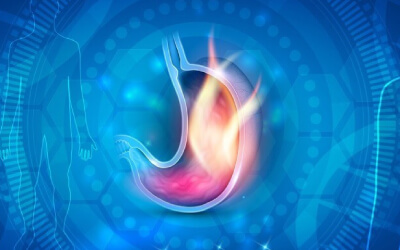
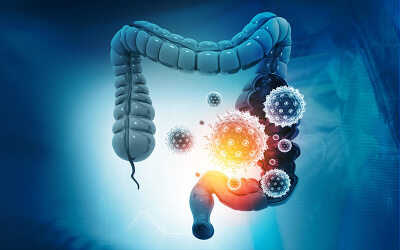
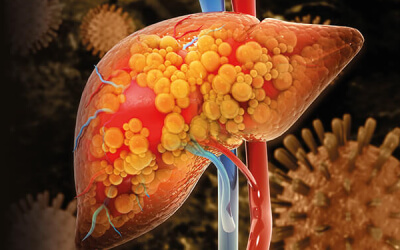
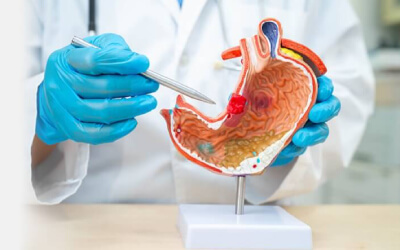
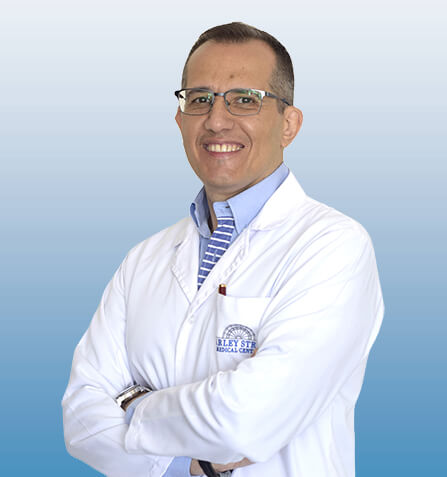
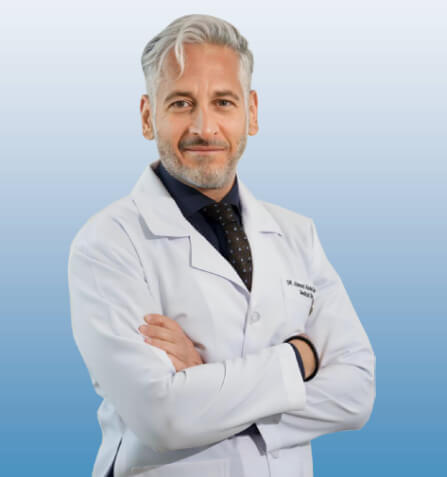
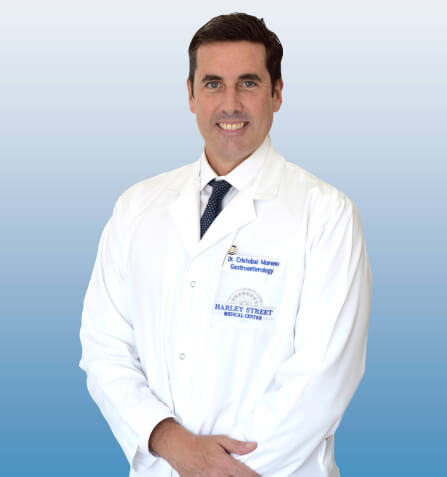
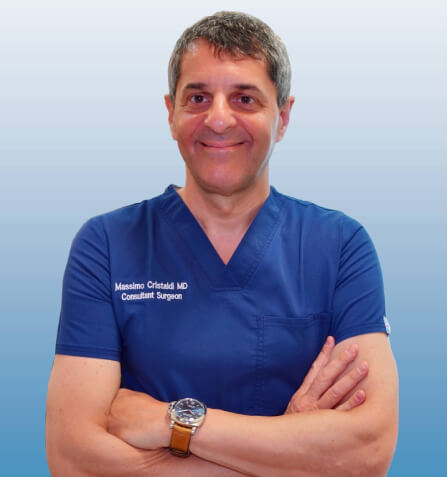
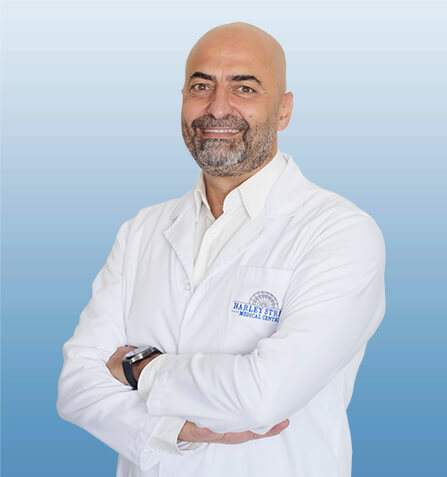


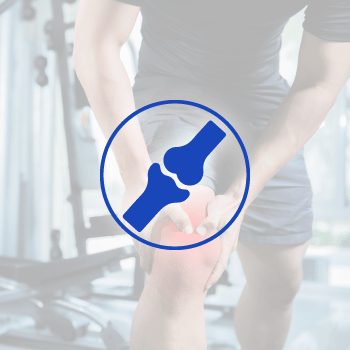 أنقر هنا
أنقر هنا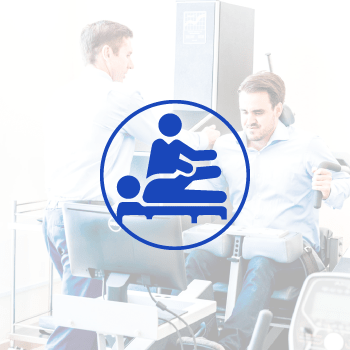 أنقر هنا
أنقر هنا
